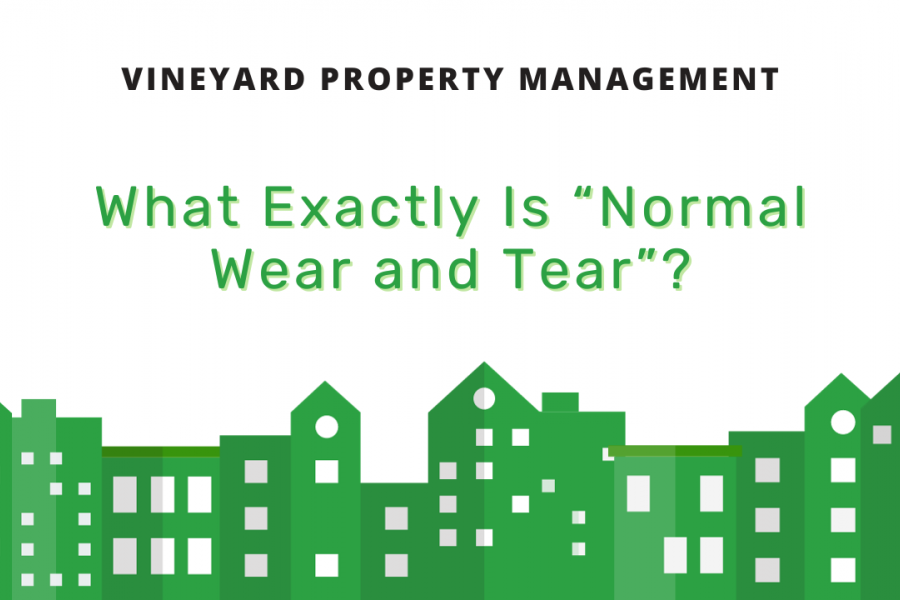
Is your property showing signs of age or usage? As a landlord, it's crucial to understand the difference between normal wear and tear and damage, to ensure a fair maintenance and deposit return process.
In this article we will cover what normal wear and tear is, how it is different from property damage, and how to handle both situations.
This knowledge is crucial in fostering a great landlord-tenant relationship as well as safeguarding your investment. Keep reading to learn more!
What Is Normal Wear and Tear?
Wear and Tear is a term used to describe the natural and inevitable deterioration of an item or property over time, due to regular use and ageing.
In the context of rental properties, it refers to the minor damages or deterioration that occur over time as a result of normal use and ageing, as opposed to negligence, carelessness, accidents, or abuse by the tenant.
For landlords, understanding the concept of normal wear and tear is crucial as it helps in distinguishing between what kind of damage tenants should be held financially responsible for, and what falls under the normal ageing process of the property.
Common examples of normal wear and tear might include
- Faded paint
- Worn out carpets
- Minor scuffs and marks on the walls or flooring
- Slighlty loose door handles

This understanding helps in maintaining a fair and transparent relationship between landlords and tenants, especially when it comes to security deposit deductions and maintenance responsibilities.
What Is Unexpected Damage?
Unexpected damage in a rental property refers to harm or deterioration that goes beyond the normal wear and tear associated with daily use. This kind of damage is often the result of negligence, abuse, accidents, or improper use by the tenants.
Unlike normal wear and tear, landlords typically hold tenants financially responsible for repairing unexpected damage. Here are some examples:
- Large holes in the walls
- Burn marks or large, uncleanable stains on the carpet
- Broken doors or windows
- Broken plumbing caused by flushing inappropriate items
Understanding the difference between normal wear and tear and unexpected damage is crucial for both landlords and tenants to ensure a fair and transparent handling of emergency maintenance issues and security deposit deductions.
It's advisable for landlords to clearly define and provide examples of what constitutes unexpected damage in the lease agreement to avoid disputes later on.
Treatment of Normal Wear and Tear vs. Unexpected Damage
The treatment of normal wear and tear versus damage in the context of security deposits can vary based on local laws and regulations, so make sure to read through your state’s laws on this.

Typically, landlords are expected to cover the costs of normal wear and tear out of their own pocket. This includes things like painting, cleaning carpets, or other minor maintenance tasks that are expected to occur over time with normal use.
On the other hand, if a tenant causes damage to the property beyond normal wear and tear, such as broken windows, holes in the walls, or other significant damage, landlords can usually deduct the cost of repairs from the security deposit.
Tips for Handling Everyday Wear and Tear
Here are some simple steps and tips to help you manage everyday wear and tear issues.
Educate Tenants
It's a good idea to educate tenants about the difference between normal wear and tear and unexpected damage at the outset of the lease.
Providing tenants with a maintenance checklist and encouraging them to report issues promptly can foster a sense of responsibility and help in maintaining the property better.
Hire Professionals
Employing reputable contractors or maintenance personnel ensures that repairs and maintenance are done correctly and efficiently.
Professional upkeep not only enhances the longevity and value of the property but also complies with local building codes and standards, ensuring safety and satisfaction for the tenants.

Update Lease Agreements
Clearly defining the responsibilities of both the landlord and tenant regarding maintenance and repairs in the lease agreement helps in avoiding misunderstandings.
Updating the lease agreement as necessary to reflect any changes in local laws or regulations ensures that the terms remain fair and transparent.
Stay Informed
Staying updated on local laws and regulations regarding landlord responsibilities for wear and tear is essential.
Joining landlord associations or forums can provide valuable insights and updates on best practices, helping landlords manage their properties effectively.
Consider Wear and Tear While Setting Rent
Factoring in the cost of addressing normal wear and tear while determining the rental price ensures that the rent covers the maintenance costs.
This approach helps in maintaining the property's value and appeal, ensuring a fair return on investment for you.
Bottom Line
Understanding the nuances of normal wear and tear is a cornerstone for maintaining a harmonious landlord-tenant relationship and ensuring the longevity of your property.
It's about striking a balance between maintaining your property and making sure it is a livable, welcoming space.
If the intricacies of managing wear and tear seem daunting, consider bringing a professional on board. Hiring a property management company like Vineyard Property Management can significantly ease this burden.
With their expertise, not only will the value of your property be upheld, but you'll also foster a positive, transparent relationship with your tenants. So, why not let Vineyard Property Management take the reins and help you navigate the challenges of property upkeep effortlessly?
